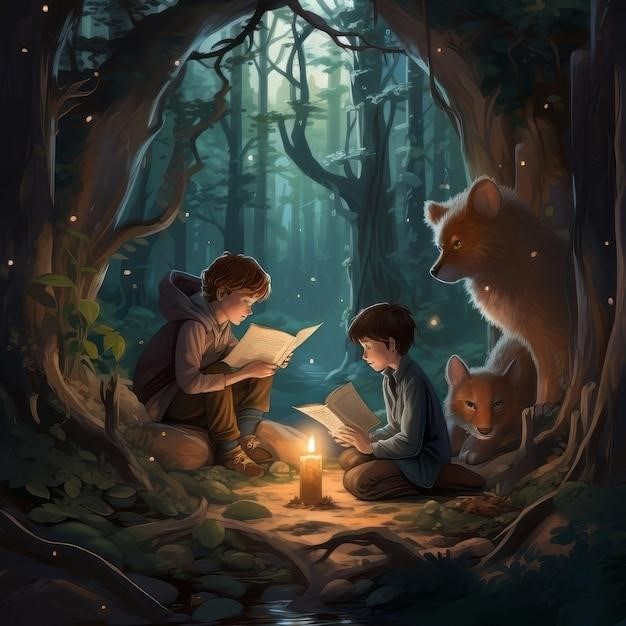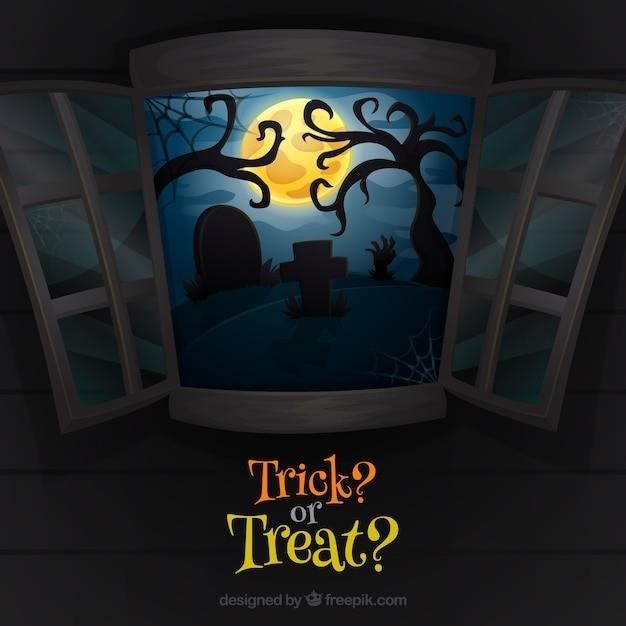
legend of sleepy hollow short story pdf
The Legend of Sleepy Hollow⁚ An Overview
The Legend of Sleepy Hollow is a classic American short story by Washington Irving‚ first published in 1820 as part of his collection “The Sketch Book of Geoffrey Crayon‚ Gent․” The story is a blend of folklore‚ ghost story‚ and romance‚ set in the fictional village of Sleepy Hollow‚ New York․ It tells the tale of Ichabod Crane‚ a superstitious schoolmaster‚ and his encounter with the Headless Horseman‚ a legendary specter said to haunt the area․ The story has become a staple of American literature and a popular Halloween tradition;
Origins and Setting
The Legend of Sleepy Hollow‚ penned by Washington Irving‚ is deeply rooted in the folklore and landscape of the Hudson Valley region of New York․ The story’s origins are tied to the Dutch settlers who inhabited the area in the late 18th century‚ bringing with them tales of spectral figures and ghostly occurrences․ Sleepy Hollow itself‚ a fictionalized version of a real valley called “Sleepy Hollow” in Westchester County‚ is portrayed as a quiet and secluded place‚ a haven for superstition and local legends․ Irving masterfully captures the atmosphere of this rural community‚ with its rolling hills‚ dense forests‚ and the meandering brook that runs through the valley․ This picturesque setting provides a backdrop for the supernatural events that unfold in the story․
The Plot⁚ Ichabod Crane’s Misadventures
Ichabod Crane‚ a lanky‚ superstitious schoolmaster‚ arrives in Sleepy Hollow seeking both a teaching position and the hand of the beautiful Katrina Van Tassel․ He is a man obsessed with tales of the supernatural‚ and his imagination runs wild with fear․ His romantic aspirations are challenged by the boisterous Brom Bones‚ a local hero who is also vying for Katrina’s affections․ One autumn evening‚ after a lively party at the Van Tassel’s farm‚ Ichabod sets out for home alone‚ his mind already filled with visions of the Headless Horseman․ As he rides through the shadowy Hollow‚ he is pursued by a ghostly figure‚ confirming his worst fears․ The encounter leaves Ichabod terrified and fleeing for his life‚ disappearing from Sleepy Hollow‚ his fate a subject of speculation and legend․
The Headless Horseman⁚ Folklore and Legend
The Headless Horseman is a chilling figure rooted in both local folklore and historical speculation․ The story of the Horseman is often linked to the legend of a Hessian soldier‚ a mercenary fighting for the British during the American Revolutionary War․ The soldier is said to have lost his head in battle‚ and his spectral form now roams the countryside‚ seeking revenge․ The legend of the Headless Horseman is a powerful symbol of fear and the unknown‚ reflecting the anxieties of a young nation grappling with its identity and the horrors of war․ Irving’s story taps into this rich vein of folklore‚ weaving a tale that blends fact and fantasy‚ blurring the lines between reality and legend․
The Story’s Themes and Symbolism
Irving’s “The Legend of Sleepy Hollow” explores themes of fear‚ superstition‚ imagination‚ and the complexities of love and jealousy․
Fear and Superstition
Fear and superstition are central to the narrative of “The Legend of Sleepy Hollow․” The story is set in a place known for its spooky atmosphere‚ “Sleepy Hollow‚” where tales of the Headless Horseman abound․ Ichabod Crane‚ the protagonist‚ is deeply superstitious and easily frightened․ He readily believes in the supernatural‚ making him a prime target for the fear and terror that permeate the story․ The Headless Horseman‚ a symbol of fear and the unknown‚ serves as a tangible representation of the anxieties and anxieties that plague Ichabod and the community․ The story’s exploration of fear and superstition highlights the power of these forces to shape perceptions‚ influence behavior‚ and even drive individuals to extremes․
The Power of Imagination
The Legend of Sleepy Hollow delves into the potent force of imagination‚ demonstrating its ability to shape reality‚ both for individuals and communities․ Ichabod Crane‚ a man susceptible to fear and superstition‚ allows his imagination to run wild‚ transforming the Headless Horseman from a local legend into a terrifying and tangible threat․ The story suggests that fear and imagination can intertwine‚ amplifying anxieties and turning the ordinary into the extraordinary․ Furthermore‚ the story hints at the power of collective imagination to shape local narratives and traditions․ The enduring popularity of the Headless Horseman legend speaks to the enduring power of stories to influence perceptions and shape cultural identities․
Love and Jealousy
At the heart of “The Legend of Sleepy Hollow” lies a complex interplay of love and jealousy․ Ichabod Crane‚ a schoolmaster with aspirations for a comfortable life‚ is drawn to Katrina Van Tassel‚ a young woman of wealth and beauty․ His romantic pursuit is fueled by both genuine affection and a desire for social advancement․ However‚ his rival‚ the boisterous Brom Bones‚ embodies the local ideals of masculinity and strength‚ posing a formidable obstacle to Ichabod’s affections․ The story explores the destructive potential of unchecked jealousy‚ as Ichabod’s anxieties and fears are magnified by his perceived competition with Brom․ The tale ultimately suggests that love‚ when intertwined with insecurity and jealousy‚ can lead to irrational behavior and self-destructive outcomes․
The Impact of “The Legend of Sleepy Hollow”
The story’s enduring popularity has shaped American literature‚ popular culture‚ and the very landscape of Sleepy Hollow itself․
Early American Literature
“The Legend of Sleepy Hollow” holds a significant place in the development of American literature․ Published in 1820‚ it was one of the earliest examples of American fiction to gain widespread recognition․ Irving’s skillful blending of folklore‚ humor‚ and suspense‚ combined with his evocative portrayal of American rural life‚ established him as a pioneer of American literary expression․ The story’s success helped to shift the focus of American literature away from European influences and towards the exploration of uniquely American themes and experiences․ It contributed to the development of a distinctive American voice in literature‚ paving the way for future generations of writers to capture the essence of the American spirit through their works․
Popular Culture and Adaptations
The enduring popularity of “The Legend of Sleepy Hollow” has transcended its literary origins‚ making its mark on various forms of popular culture․ The story has been adapted into numerous films‚ television shows‚ and stage productions‚ each reimagining the tale with its own unique perspective and interpretation․ Notable film adaptations include Tim Burton’s 1999 film “Sleepy Hollow‚” which infused the story with a gothic horror aesthetic‚ and the 1949 film “The Adventures of Ichabod and Mr․ Toad‚” which combined the story with another classic tale․ The Headless Horseman‚ a symbol of fear and the supernatural‚ has become an iconic figure in Halloween celebrations‚ appearing in countless costumes‚ decorations‚ and theme park attractions․
Sleepy Hollow Today
The village of Sleepy Hollow‚ New York‚ where the story is set‚ has embraced its literary heritage and transformed itself into a popular tourist destination․ The village boasts several attractions related to “The Legend of Sleepy Hollow‚” including the Sleepy Hollow Cemetery‚ where Washington Irving is buried‚ and the Old Dutch Church‚ which features a stained-glass window depicting Ichabod Crane’s fateful encounter with the Headless Horseman․ The village also hosts annual events‚ such as the Sleepy Hollow Horseman Ride and the Sleepy Hollow Lantern Tours‚ which draw visitors from far and wide․ These events celebrate the story’s legacy and keep the legend alive for generations to come․

Where to Find “The Legend of Sleepy Hollow”
The story is widely available online‚ in PDF format‚ and in print editions․
Online Resources
The Legend of Sleepy Hollow is readily accessible online through various platforms․ Project Gutenberg‚ a renowned digital library of public domain works‚ offers a free ebook version of the story․ This platform allows users to download the story in various formats‚ including EPUB‚ Kindle‚ and plain text․ Additionally‚ numerous websites‚ such as Wikisource and online bookstores‚ provide access to the text․ These resources offer a convenient and readily available option for reading the story online․
PDF Downloads
For those who prefer a downloadable and printable format‚ numerous websites offer PDF versions of “The Legend of Sleepy Hollow․” Online libraries‚ such as the Internet Archive‚ provide free access to digitized versions of the story․ Additionally‚ many educational websites and online bookstores make PDF downloads available‚ allowing users to conveniently access and print the text․ These PDF versions often include illustrations and annotations‚ enhancing the reading experience and providing valuable insights into the story․
Print Editions
For those who prefer a tangible copy of “The Legend of Sleepy Hollow‚” numerous print editions are readily available․ Traditional bookstores‚ both online and brick-and-mortar‚ offer a wide selection of copies‚ ranging from classic paperback editions to beautifully illustrated hardcovers․ Many editions include introductions and critical essays‚ providing further context and analysis of the story․ Additionally‚ specialized editions‚ such as those designed for children or featuring specific artwork‚ are available for those seeking a unique or personalized reading experience․
Further Exploration
For those seeking a deeper dive into the world of “The Legend of Sleepy Hollow‚” a wealth of resources awaits․
The History of Sleepy Hollow
The real Sleepy Hollow‚ located in Westchester County‚ New York‚ has a rich history that predates Washington Irving’s famous tale․ Originally inhabited by Native Americans‚ the area became a Dutch settlement in the 17th century․ The name “Sleepy Hollow” itself derives from the Dutch “Slaap-y-Hollow‚” a reference to the area’s tranquil atmosphere․ The region played a role in the Revolutionary War‚ with battles taking place nearby․ Today‚ Sleepy Hollow is a popular tourist destination‚ attracting visitors interested in its historical significance‚ its connection to Irving’s story‚ and its charming atmosphere․ The Sleepy Hollow Cemetery‚ where Irving himself is buried‚ features elaborate mausoleums and monuments‚ adding to the area’s mystique․ The town’s history‚ intertwined with legend‚ makes it a captivating place to explore․
Washington Irving’s Other Works
Washington Irving‚ the author of “The Legend of Sleepy Hollow‚” was a prolific writer whose contributions to American literature extend far beyond this iconic tale․ He is also known for his humorous and satirical works‚ such as “A History of New York by Diedrich Knickerbocker‚” which satirizes the early history of New York City․ He penned the equally famous short story “Rip Van Winkle‚” which explores themes of time‚ change‚ and the American Dream․ Irving’s works often feature charming characters‚ vivid settings‚ and a blend of folklore and history․ He was a key figure in the development of American literature‚ establishing a distinctively American voice and style․ His works continue to be enjoyed and admired for their wit‚ imagination‚ and enduring themes․
The Romantic Era in American Literature
“The Legend of Sleepy Hollow” is a product of the Romantic Era in American literature‚ a period marked by a shift away from Enlightenment rationalism towards a greater emphasis on emotion‚ imagination‚ and the individual․ Romantic writers often explored themes of nature‚ the supernatural‚ and the power of the human spirit․ Irving’s story embodies these themes‚ with its focus on the haunting atmosphere of Sleepy Hollow‚ the supernatural presence of the Headless Horseman‚ and the emotional turmoil experienced by Ichabod Crane․ The Romantic Era saw a surge in American literary creativity‚ with writers like Irving‚ Nathaniel Hawthorne‚ and Edgar Allan Poe contributing to a uniquely American literary tradition․ The era’s emphasis on imagination and the exploration of the darker side of human nature laid the foundation for later genres such as Gothic literature and horror․